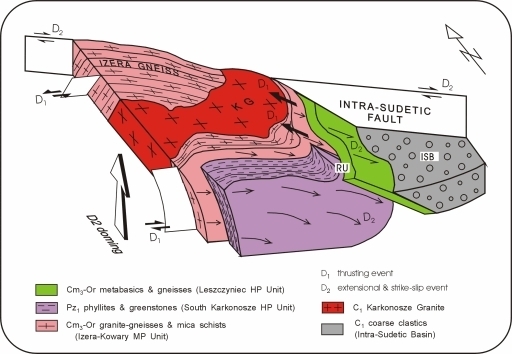Welcome to the Institute of Geological Sciences at the University of Wroclaw, Poland. Our Institute offers opportunities for interdisciplinary research and has 55 full-time faculty in geological sciences. The Institute comprises nine departments covering the whole spectrum of Earth sciences. They are the departments of Physical Geology, Stratigraphic Geology, Mineralogy and Petrography, Structural Geology and Tectonics, Hydrogeology , Economic Geology, Isotope and Applied Geology and of Paleobotany. The Institute runs two museums, those of Mineralogy and of Geology, with diverse and rich collections of minerals, rocks and fossils from all over the world, accumulated since the early 19th century.
A number of faculty work closely with researchers at other science institutes at Wroclaw University, at the Polish Geological Survey and at the Polish Academy of Sciences, as well as with other Polish universities and various industry and academic laboratories and departments throughout the world. Long-term scientific co-operation has been established with, e.g., Keele University (U.K.), Universität Bochum (Germany), and Université de Clermont Ferrand (France).
The buildings of the Institute of Geological Sciences, are a solid brick construction, dating back to the 1920s, and include a modern section containing Earth Science and Physics Libraries. The buildings also house the Wroclaw University institutes of physics as well as a number of departments of the Wroclaw Academy of Agriculture. |
The Institute of Geological Sciences at Wroclaw University is one of the biggest academic institutions in Poland engaged in research and teaching in the domain of Earth sciences. Its academic staff comprises over 50 top-qualified, mostly young, full-time faculty. The research and teaching activity of the Institute covers the whole range of broadly understood, pure and applied geological sciences. The Institute of Geological Sciences at the University of Wroclaw, follows the tradition of German Geological-Paleontological and Mineralogical-Petrographical institutes of Universität Breslau (German name of Wroclaw), which gradually developed from the university's 'mineralogical cabinet' founded in 1812. The 2nd World War resulted in total destruction of the buildings that had housed the university's mineralogical and geological institutions and in taking over the territory of Silesia, together with Wroclaw, by Poland. In 1945 the Geological Sciences were reborn at the University of Wroclaw, in a new shape, in new location and with new, Polish staff. Since that time the Institute has grown significantly and has gained strong international reputation in several branches of Earth Sciences owing to efficient and skillful work of its staff. The University of Wroclaw provides education in the geological sciences at the levels of B.Sc, M.Sc and Ph.D. Approximately 300 students are enrolled in B.Sc courses, and there are in total 120 students on M.Sc and Ph.D levels.
Full-time Ph.D. students are supported by university scholarships and can successfully apply for research grants. 100 new B.Sc students are admitted each year to the Institute. The three-year curriculum comprises mathematics, physics and chemistry, accompanied by the main branches of geological sciences, such as physical geology, mineralogy and crystallography, introduction to computer sciences, petrology, sedimentology, structural geology, hydrology and groundwater hydrology , engineering geology, geophysics, economic geology and geological mapping. The M.Sc studies, lasting 2 years, follow the B.Sc studies. The students can choose between 4 specialist curricula: the prospecting geology, mineralogy and petrography, hydrogeology and engineering geology and geochemistry. The students take courses in, among others, computer methods in geology, GIS, facies analysis, mineralogy and geochemistry, numerical modeling, tectonics, regional geology, economic geology, environmental protection, economics, law in geology and mining.

The Institute's laboratories are well equipped with modern research machinery and experimental apparatuses.
Institute established in 1945 continues geological research and study since 1811 year and is one the biggest education and research center in Poland. |